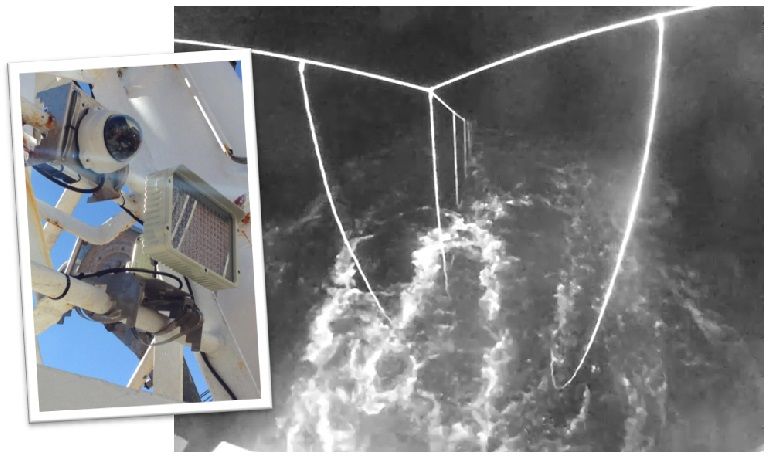Monitoring Seabird Conservation in the South Georgia Patagonian Toothfish Fishery
For fisheries operating near the South Georgia Island wildlife sanctuary, protection of endangered seabirds is a top priority. Tori lines and streamers help keep birds safe, and observers and monitoring systems verify results. Since 2014, Archipelago has been working alongside the Argos Froyanes fishing company to record and review tori line procedures and ensure the region’s strict seabird conservation regulations are being met.
Located 1,400 km East Southeast of the Falkland Islands, the sub-Antarctic Island of South Georgia is home to a vast number of rare and endangered seabirds (including several species of albatross) living amidst the region’s prime fishing grounds.
 To help avoid interactions between seabirds and longline fishing vessels, the Commission for the Conservation of Antarctic Marine Living Resources (CCAMLR) oversees a comprehensive set of seabird conservation measures designed to reduce fishing–related seabird mortality.
To help avoid interactions between seabirds and longline fishing vessels, the Commission for the Conservation of Antarctic Marine Living Resources (CCAMLR) oversees a comprehensive set of seabird conservation measures designed to reduce fishing–related seabird mortality.
Implemented and enforced by the Government of South Georgia and the South Sandwich Islands (GSGSSI), these measures require longline fishers to attach weights to branch lines, set gear only at night (under minimal lighting), and deploy tori lines equipped with colorful streamers to help scare birds away from baited hooks.
In 2014, the Argos Froyanes Ltd. fishing company approached Archipelago to explore monitoring alternatives for longline fishing vessels operating in the South Georgia Patagonian Toothfish fishery. Argos’ interest in Archipelago electronic monitoring (EM) systems stemmed from a 2014 MRAG report that described similar Archipelago applications used to monitor bycatch reduction programs within fisheries governed by the Australian Fisheries Management Authority (AFMA) and New Zealand Ministry of Fisheries.
For the South Georgia project, Archipelago installed EM Observe™ monitoring systems aboard two Argos vessels: the F/V Argos Georgia and the F/V Argos Froyanes.
In 2014, the Argos Froyanes Ltd. fishing company approached Archipelago to explore monitoring alternatives for longline fishing vessels operating in the South Georgia Patagonian Toothfish fishery. Argos’ interest in Archipelago electronic monitoring (EM) systems stemmed from a 2014 MRAG report that described similar Archipelago applications used to monitor bycatch reduction programs within fisheries governed by the Australian Fisheries Management Authority (AFMA) and New Zealand Ministry of Fisheries.
For the South Georgia project, Archipelago installed EM Observe™ monitoring systems aboard two Argos vessels: the F/V Argos Georgia and the F/V Argos Froyanes.

Each EM system included a control center, user interface, a pair of rotation sensors (one to detect gear setting and the other to detect hauling), a GPS receiver, a satellite modem, and two cameras (one to capture setting and the other to capture hauling). To comply with the CCAMLR requirement to minimize external illumination, infrared (IR) cameras were a necessity.
The EM systems were installed in March 2014, and configured to collect data throughout the 2014/2015 South Georgia Toothfish fishery seasons. As the electronic monitoring system was not intended to replace human observers in this case, fisheries observers were present on each vessel as well.
 During this initial two–year trial, Argos stakeholders had the opportunity to learn more about the systems with remote support from Archipelago staff. Various challenges were identified and resolved through fine tuning, crew training, and ongoing collaboration between Argos and Archipelago.
During this initial two–year trial, Argos stakeholders had the opportunity to learn more about the systems with remote support from Archipelago staff. Various challenges were identified and resolved through fine tuning, crew training, and ongoing collaboration between Argos and Archipelago.
Due to the requirement to set gear at night (using minimal lighting), IR cameras were required; however, IR cameras alone were not sufficient for recording setting activity at the distances required.
While the standard IR cameras could record nighttime activity out to a distance of approximately five to ten metres, the setting operations extended to a range of 80 metres or more. To accommodate these distant viewing areas, EM technicians specified an external IR illuminator for each location.

Based on the promising results of this initial trial, Argos identified two factors as the ongoing focus for this EM project to follow:
- Reduce observer workload by enabling observers to use EM to confirm proper deployment of tori lines and streamers.
- Provide a permanent record of evidence verifying that bird mitigation regulations are being met.
Following the successful conclusion of the initial two–year test period, Argos and Archipelago continue to refine and develop the fishery’s electronic monitoring program.
Next steps include a further integration and refinement of the way infrared video is used to better verify tori line deployments. (Pending approval from the GSGSSI, protocols could be implemented to allow observer access to EM data, and appropriate data tracking and chain–of–custody protocols developed to support the use of EM data as proof of compliance with seabird mitigation measures.)
As a dedicated supporter of sustainable fishing practices, Argos is playing a key role towards the protection of seabirds within this unique and environmentally sensitive region.
For more information on the conservation measures described here, visit the Commission for the Conservation of Antarctic Marine Living Resources web site.
To learn more about the monitoring and review technology, visit the Electronic Monitoring page on this site.

